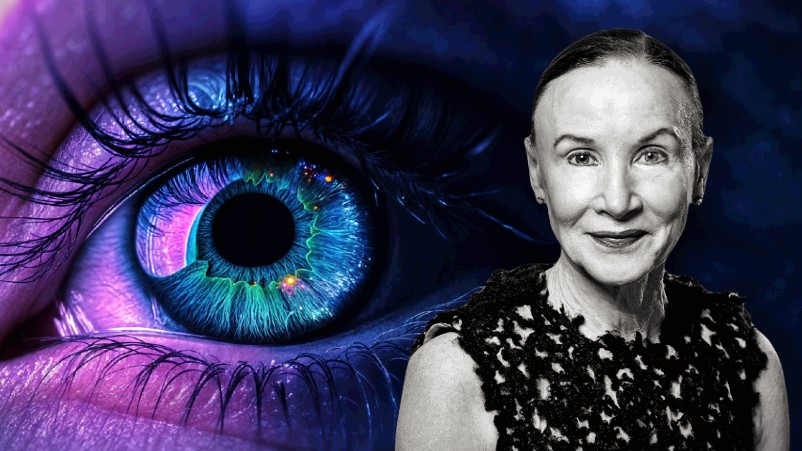Switching channels: Samsung Ads takes on media, ramps up programmatic TV with ex-Google exec at the helm, mobile to follow

Watch this space: Samsung's plotting a major push for ad dollars and is building a content empire.
Samsung Ads Australia is making a major play for TV ad dollars - and mobile is set to follow. With one of the strategic architects of Google's ad business at the helm and major forces disrupting the digital ad market, the timing might just be right.
What you need to know:
- Samsung is ramping up its ad business via Samsung TV Plus.
- Former Google exec Alex Spurzem is driving a programmatic push, with a Samsung DSP set to launch by the year end and content recognition giving buyers a sharper audience picture.
- The company aims to tie its CTV and mobile ad businesses together, with the promise of cross screen targeting, measurement and attribution – without the drama of cookie deprecation and iOS shifts.
Quietly confident
Samsung is ramping up its ad business in earnest. Connected TV, via 1.8m ad enabled TVs in Australia, is the start point. But it aims to bring millions of handsets into play and link the two channels – and is eyeing other opportunities too.
The man spearheading Samsung Ads Australia, Alex Spurzem, came directly from Google, where he spent the best part of a decade building out its adtech business across Asia Pacific. He was one of the people that launched DoubleClick Bid Manager in Australia and the wider region back in 2012. Latterly Spurzem ran market strategy, measurement, tech and data.
Now he thinks the time is ripe for a programmatic TV business, and Samsung's advertising operation aims to have its own demand-side platform (DSP) up and running by the year-end. It’s probably safe to say Spurzem's unit will be building out a fair bit more.
We have an opportunity to build a portfolio of advertising assets that spans connected TV, mobile… And there might be other opportunities beyond that.
Empire building
TV Plus will initially scale via the TV sets, with all post-2017 Samsung TVs able to run its ad formats.
But Samsung uses a CTV mobile app in other markets and Spurzem said “it would be reasonable to expect that TV Plus comes as a mobile app in Australia”.
“Once you start to combine that, our vision for Samsung Ads in Australia is certainly to not be constricted to the connected TV space,” he told Mi3.
“We have an opportunity to build a portfolio of advertising assets that spans connected TV, mobile… And there might be other opportunities beyond that.”
Samsung is already pushing into gaming ads, given its smart TVs recognise the content they screen, and the devices connected to them.
“Over the next two to three years, we'll end up in a place where we have that portfolio of assets,” said Spurzem.
Meanwhile, it will also start creating local content.
“We do not yet have a Samsung-produced channel in this market. However, we do have Samsung owned and operated channels in the in the US,” said Spurzem. “I don't think I'm speaking out of school if I say it’s reasonable to expect that we might have that over time here as well.”
Cleanskins
While Samsung aims to woo advertisers on the strength of a tonne of proprietary data, it won’t be using personal data in its ads business, according to Spurzem, and it won’t be asking people to log-in or register.
“The data we bring to bear roughly falls into two buckets. One is device level data. For instance, knowing that a streaming device is plugged in, that a game console is connected, or how new your TV is, what size it is – device level information,” he explained.
“The other bucket is viewership data and viewership data is observed through a piece of proprietary technology we call automated content recognition. That allows us to observe programme level insights, such as what kind of shows you've watched on linear television.
“That includes what kind of ads have been shown on the TV … what kind of gaming titles may have been played on the on the television or what might have been watched through a set top box,” added Spurzem.
The sum of that data, he claimed, gives advertisers insight they cannot get elsewhere.
Samsung Ads is now in negotiations with partners to bring in demographic information that it can overlay across its own data.
Like other CTV players are now attempting, Spurzem thinks those deals will bring a new class of advertisers to TV, with smaller firms able to buy by postcode. But one to one addressability is not yet on the cards and Samsung is keen to steer well clear of looming data privacy regulatory intervention.
“The long and short of it is that we don’t handle any personal information,” said Spurzem. “The cornerstone is viewership insights across the whole of the smart TV.”
Meanwhile, he thinks the Apple’s privacy push via the iOS 14.5 update, and his erstwhile employer’s move to close off its ecosystem by deprecating cookies, could help clear the way for new models such as Samsung’s.
“I haven't gotten more phone calls because Apple has a beef with Facebook, but from Samsung’s point of view, we're obviously following all of this with interest,” said Spurzem.
“I'm delighted to say that neither the Apple problem, nor the death of cookies affects Samsung as much as it does other advertising businesses, on account of the fact that we deal with the Samsung ecosystem and Samsung device identifiers.”
Grand designs
Of the 1.8m TVs able to accept Samsung ads in Australia, Spurzem said 1.4m can currently access Samsung TV Plus. At present, some 350,000 monthly active users are watching 2.5 hours a month on average. Across 57 channels, it’s not a huge audience, but that’s from a standing start since launching in December.
“It’s still in its infancy and it’s growing by the day,” said Spurzem.
The firm believes Samsung can play in the space between subscription video on demand and free to air, targeting those that want to flick through channels and find “Grand Designs” type shows rather than bingeworthy SVOD series.
Spurzem said the platform now provides a growing reach extension for TV advertisers, who can access its native display units via a managed buy, or programmatically buy Samsung TV Plus ads while rolling in data and measurement to bring digital capability TV.
Despite the increasingly cluttered landscape, he’s betting that the market will prove receptive.
“A decade ago, when I still worked agency-side and programmatic just started out, I remember having lunch with a TV planner, and trying to convince him that within a couple of years we'd have very targeted, way more measurable television and that it would be supported by programmatic infrastructure,” said Spurzem.
“Obviously, I was woefully wrong about the timing of it. But now, 10 years later, I think we are finally at that pivotal point.”


